Possible Internet
Speculative
Augmeted Reality
Research
Case Study
Speculative
Augmeted Reality
Research
Case Study
2022
Jeff Wilkinson
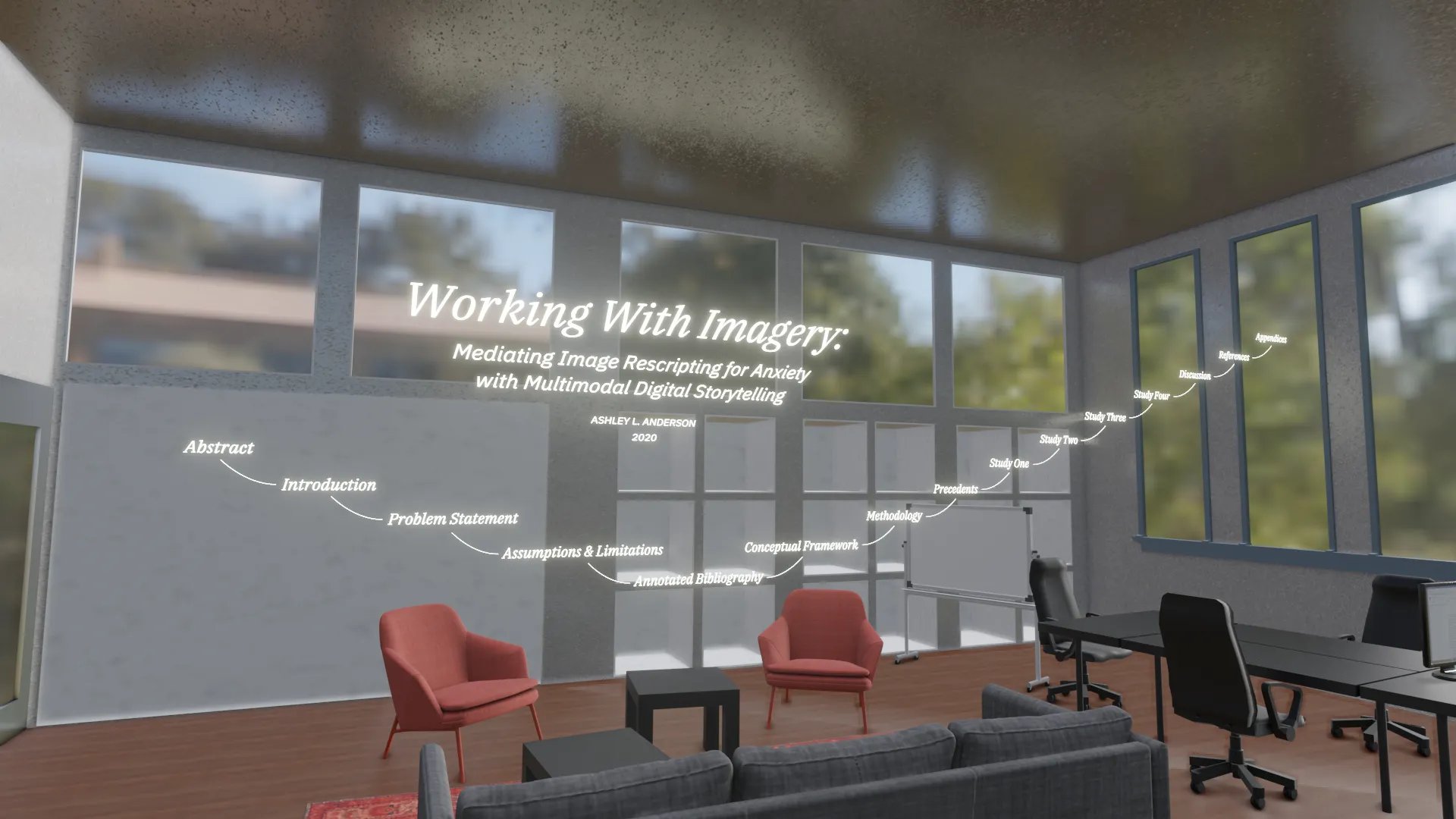
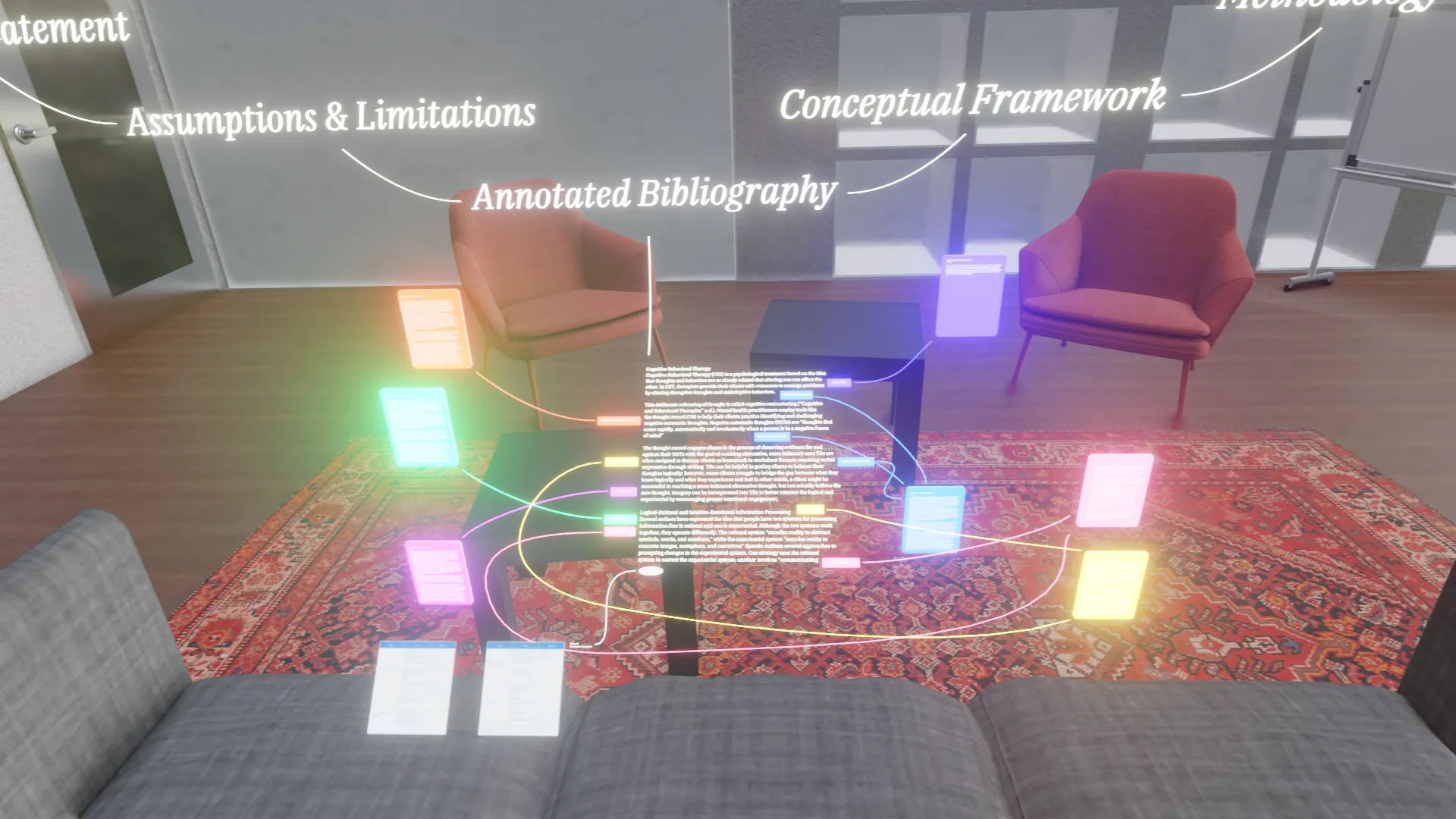
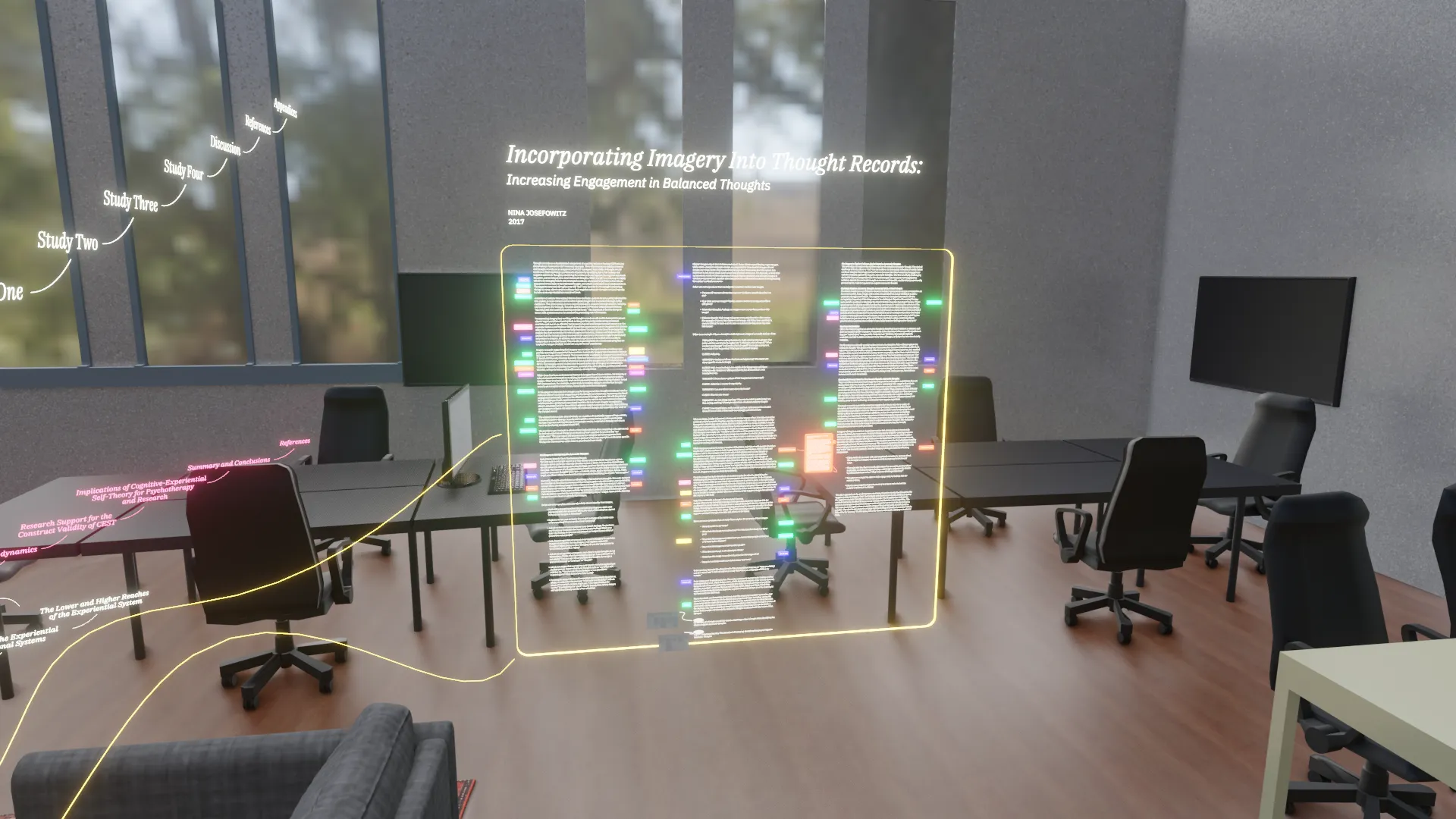
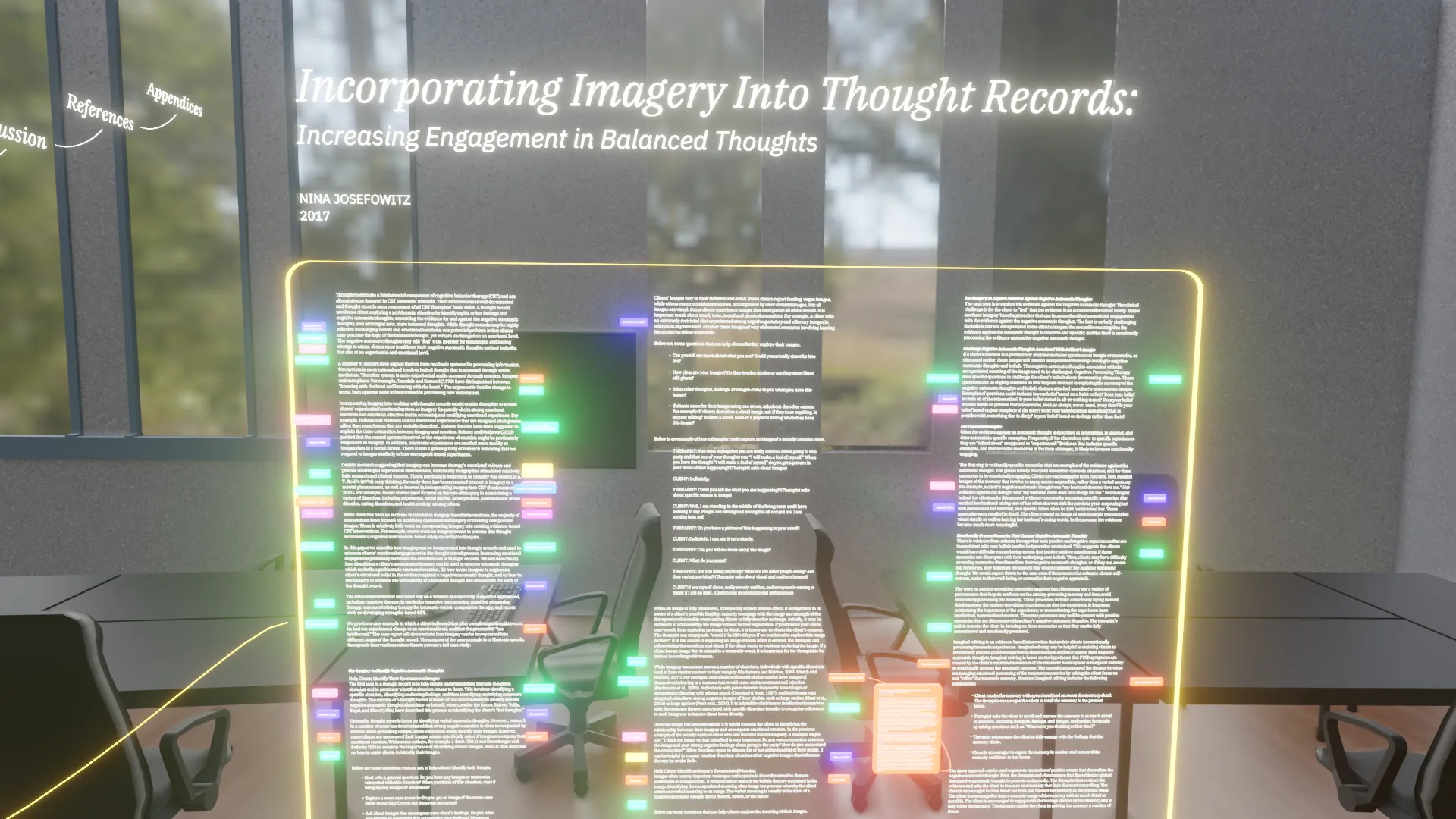
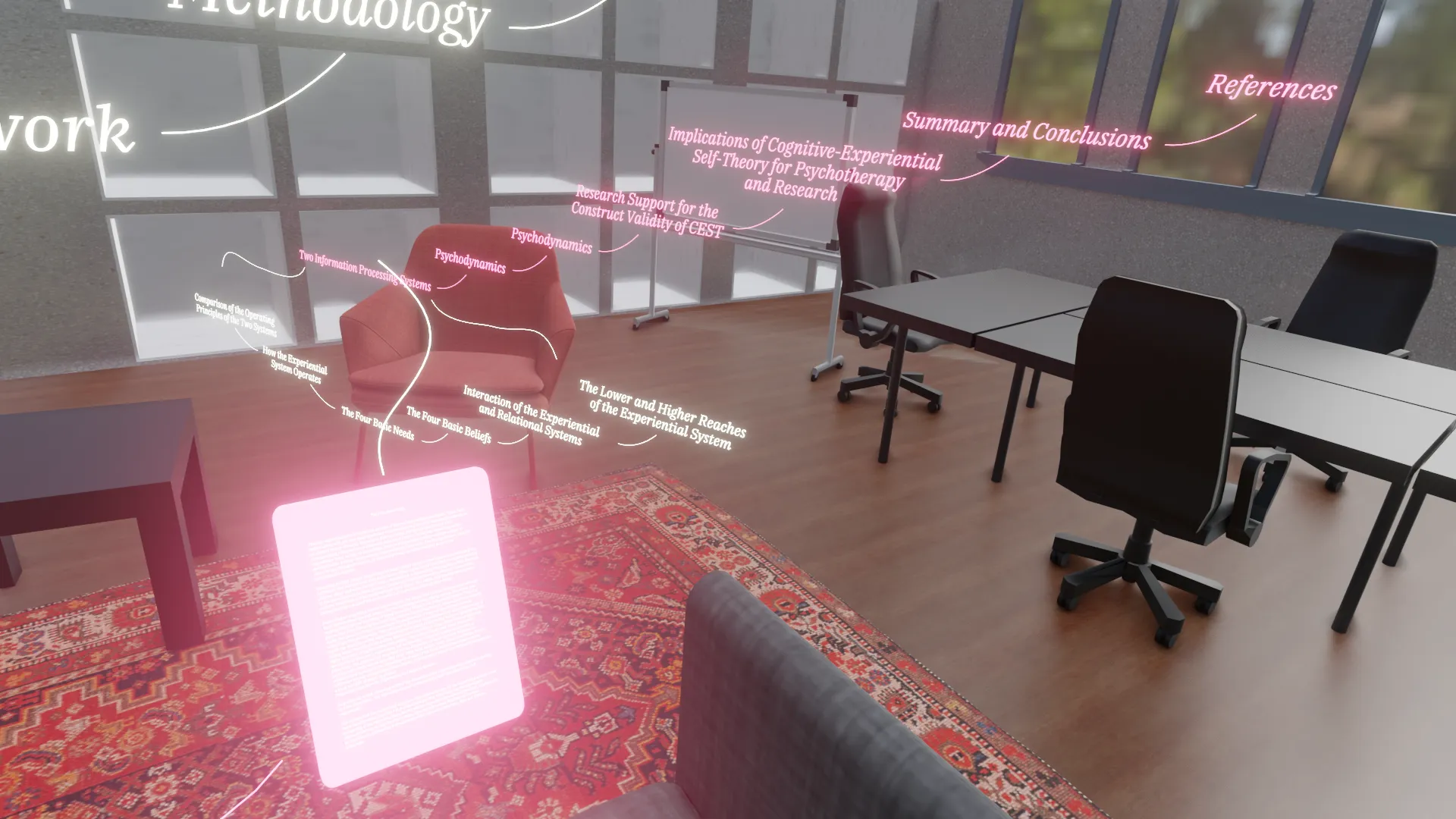
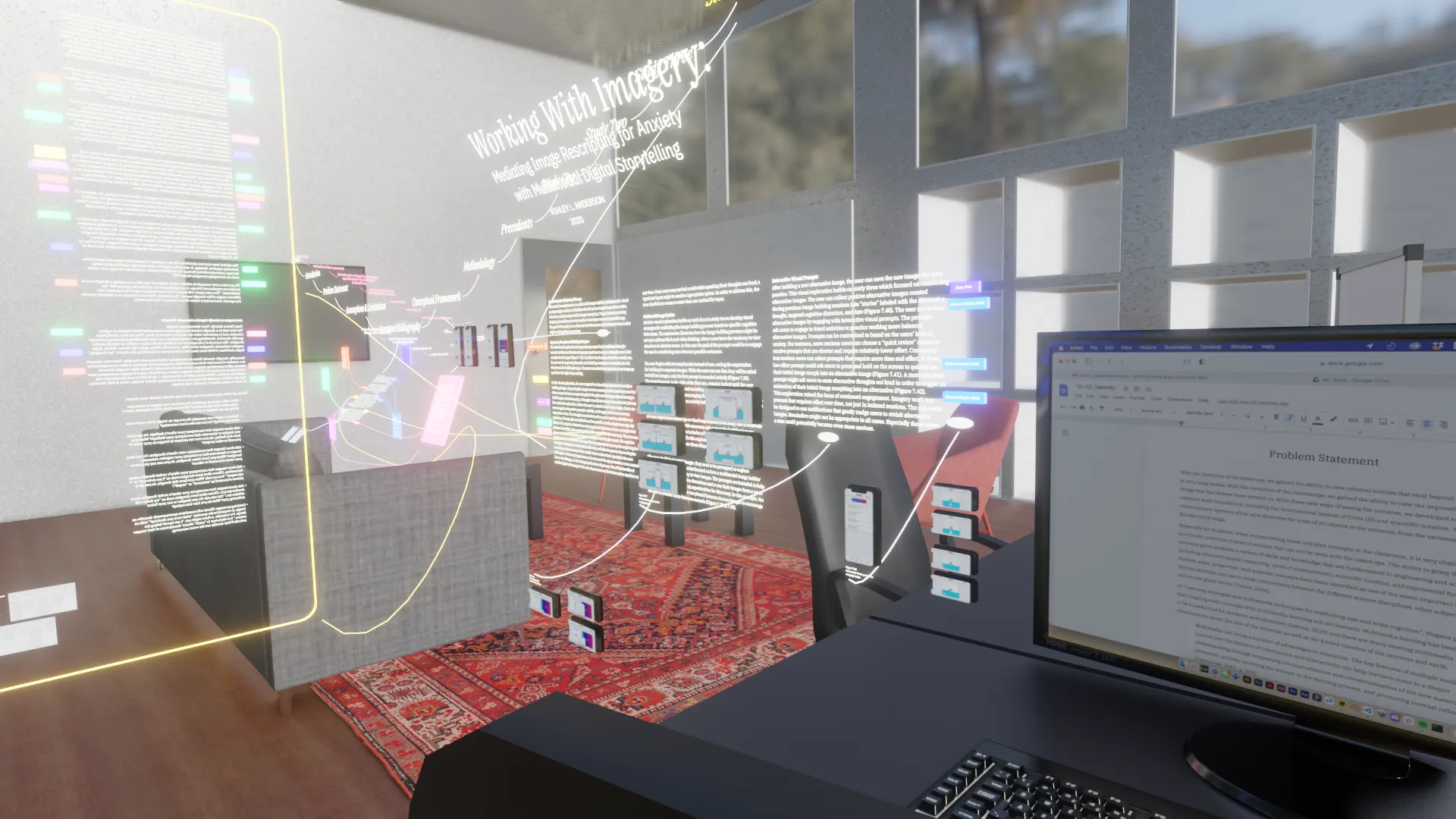
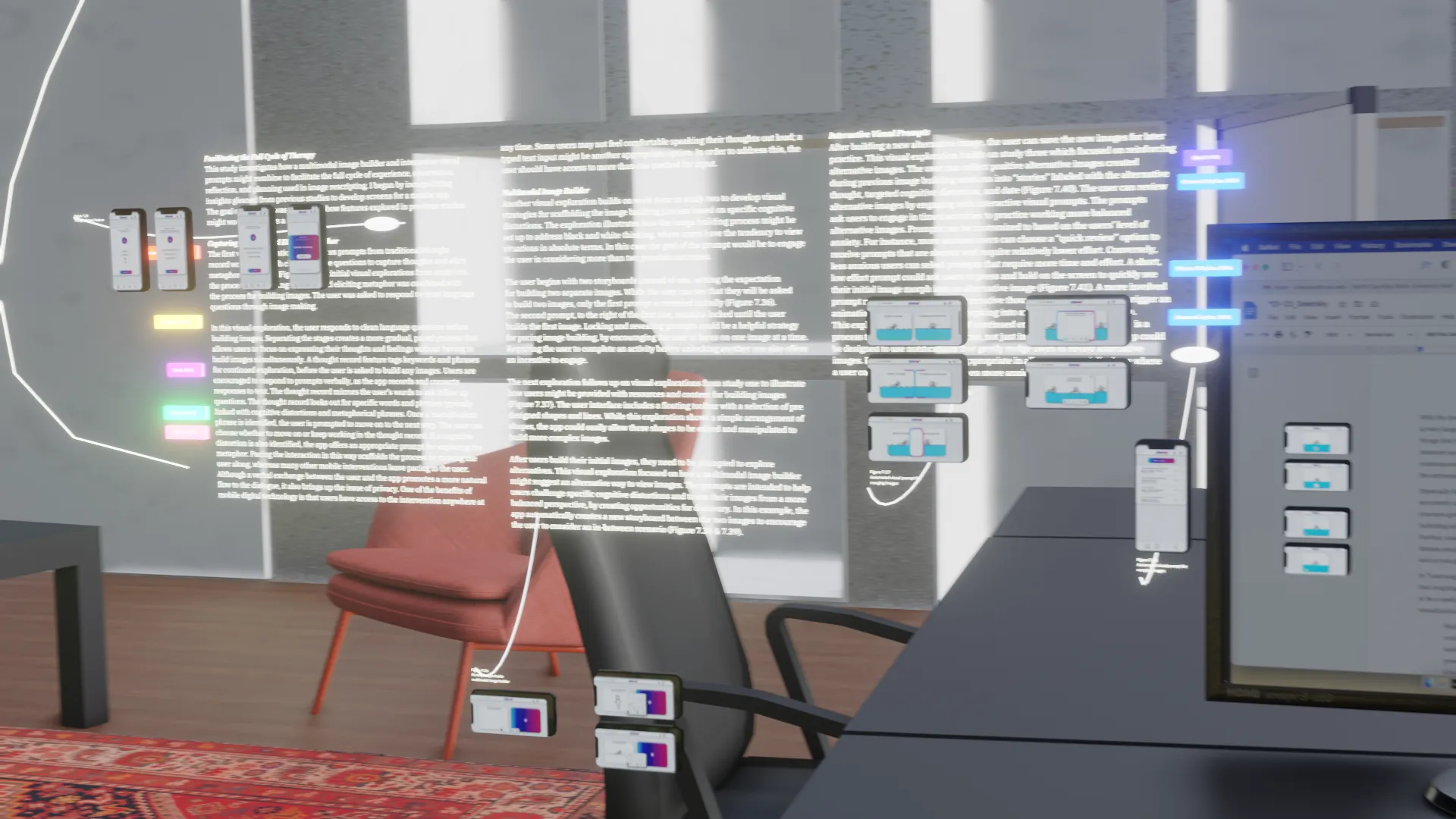
We began with the concept of a text ribbon. We imagined what it would be like if text could be read in a 3D space using Rapid Serial Visual Presentation speed reading technology.
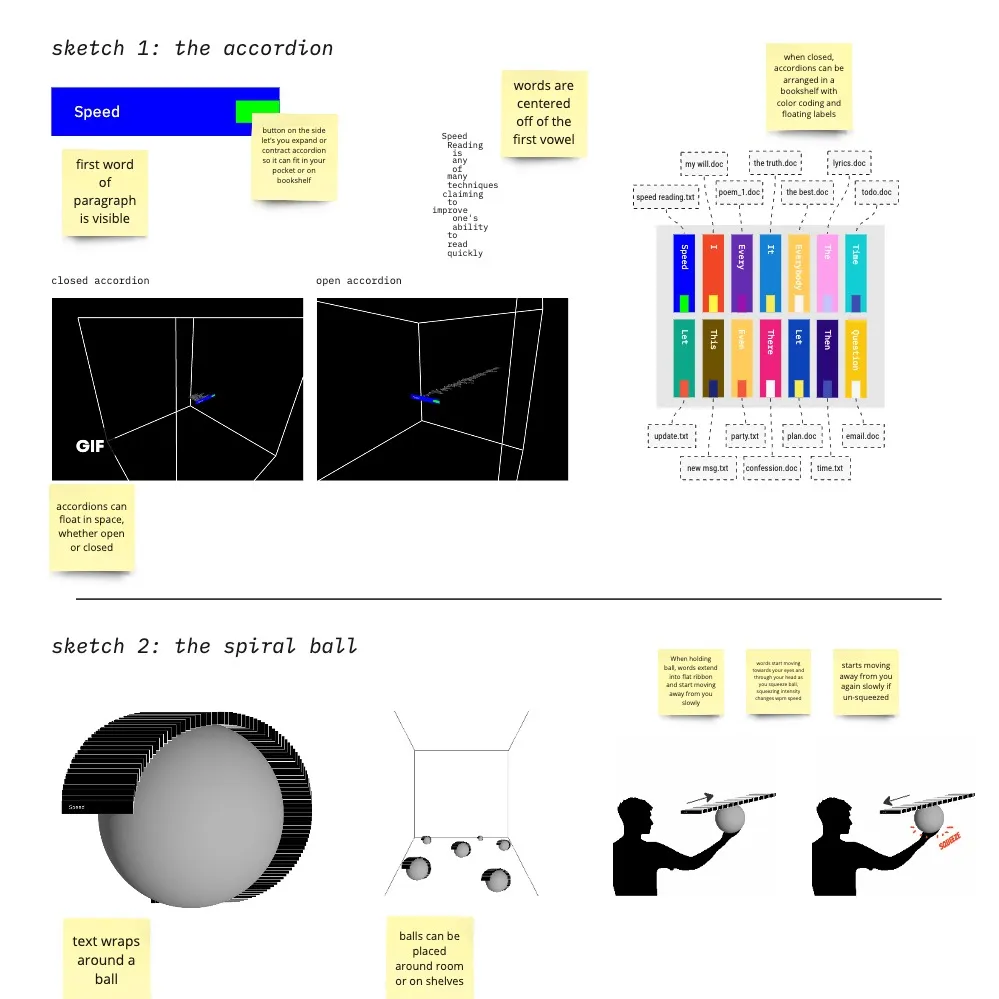
Basic sketches were made, including some gifs made in Processing. We started to imagine how a research paper might look inside of this framework.
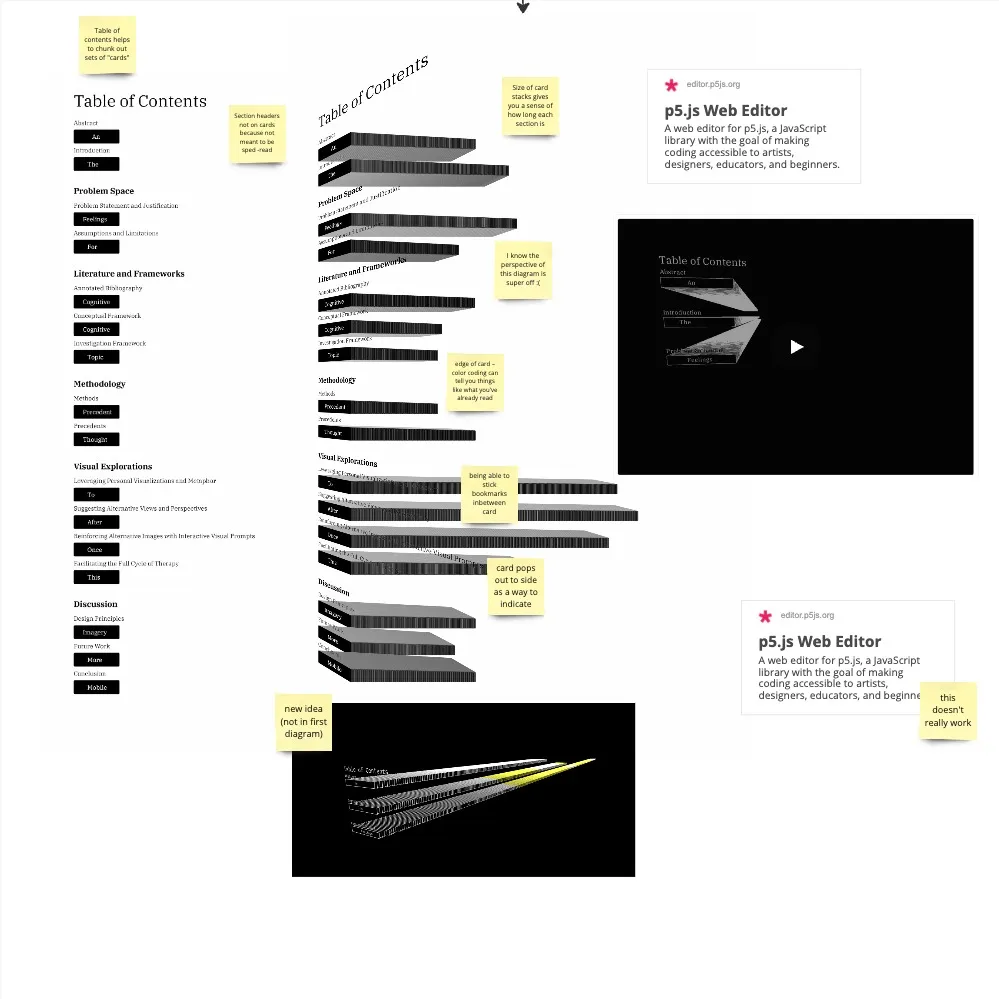
I used p5.js to imagine some of the 3D spaces in a really quick way before moving onto a more fleshed out video.
Made in Blender
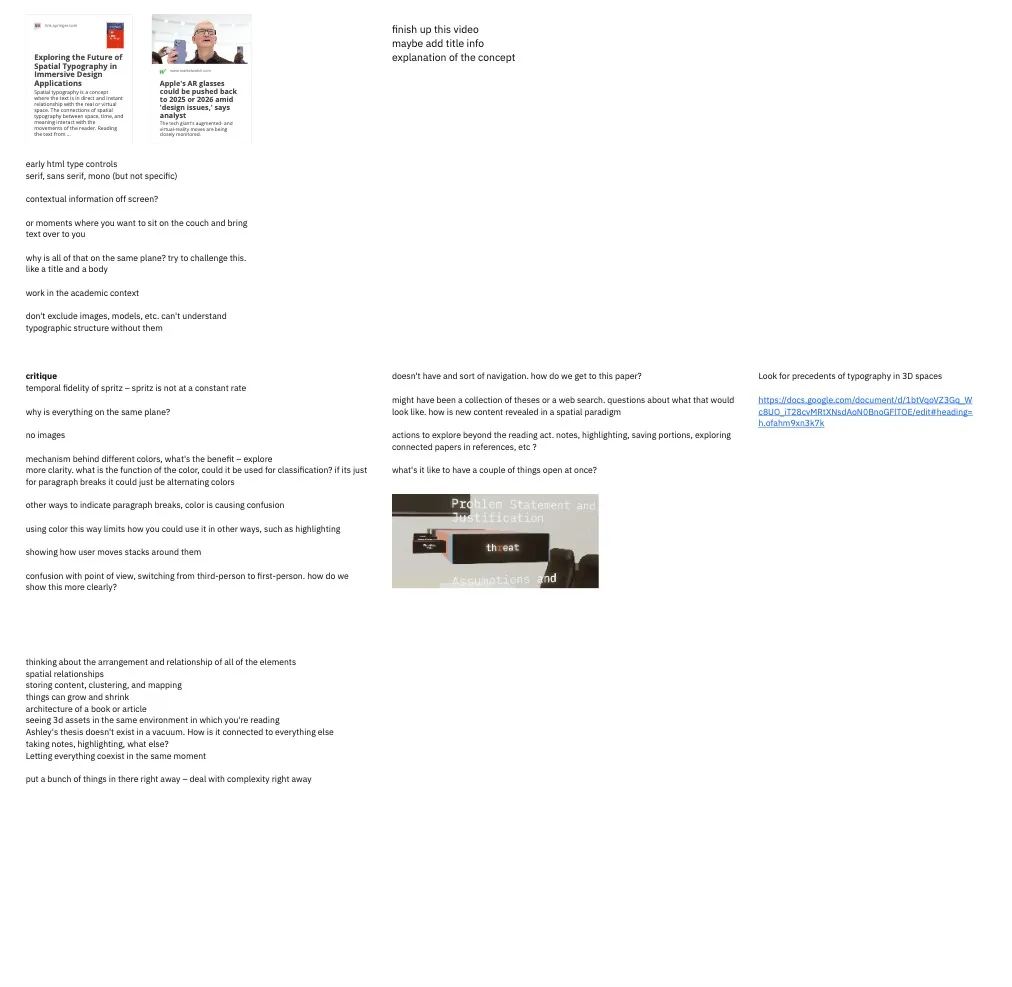
Finally, we created a 3D model of our studio space in Blender. The prototype depicts a possible solution for managing complex academic literature review sessions with affordances offered by extended reality.
In the video (at the top of the page), a person (represented by a purple hand) is reading through Ashley Anderson’s Master’s Thesis "Working with Imagery: Mediating Image Rescripting for Anxiety with Multimodal Digital Storytelling." The reader is presented with the first set of antlers which show all of the sections contained in Ashley’s paper. The reader can shift which section appears at the bottom of the antlers (not shown in the video).